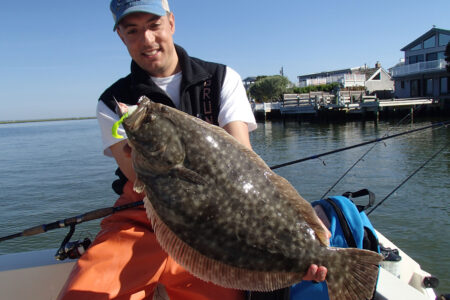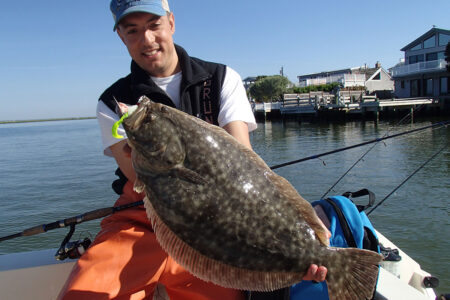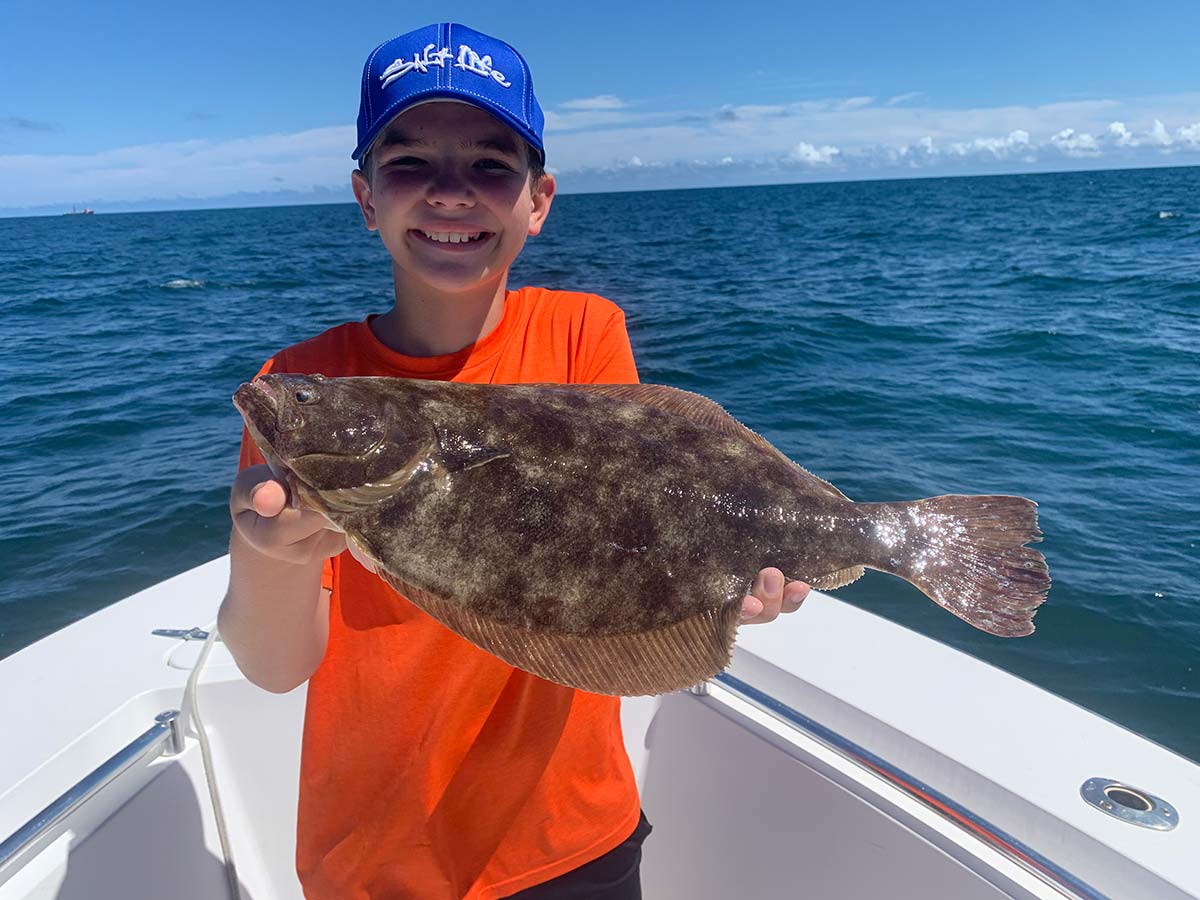
Kick off the ’23 season on outback flatties!
As a South Jersey native that lives and breathes fluke fishing, the May 2 season opener is an invigorating prospect.
Gone, at least for now, are the years where you couldn’t retain a fluke until dates somewhere near Memorial Day; I’m certain my joy is shared by a plethora of South Jersey flatty fishermen that are chomping at the bit to get out on the water where the laughing gulls cackle, the salt smell invades the senses and the summer flounder devour enterprising anglers’ baits.
The back bays see fish migrating into the estuary system steadily on the new and full moons of April, May and June. Although, North Jersey is the cat’s meow for late summer ocean attacks and having a larger biomass of keepers, South Jersey often gets the nod for the place to be when starting gate opens on May 2. In terms of what I consider South Jersey, it’s those waters from Cape May up through Long Beach Island.
Waters “inshore” of the inlets – provided they are major throughways that have tidal flow and oxygenated waters readily flowing throughout their length – see the fluke migration place an abundance of fish in their corridors. These locations that can consist of shallow channels of 6 to 30 feet that often load up with fish of all sizes. Multiple entry points to each waterway and surrounding flats supply grass shrimp, crabs and small baitfish that fluke gorge upon.
What’s more, the overlooked pot holes and dimples on the sandy flats are worthy of inspection because fluke exhibit a liking of waters 5 to 8 feet in depth. Two hours before and after high tide are the rule of thumb for great back bay fishing because the water is the cleanest and clearest of the tidal cycle. If it’s a bad seaweed year, the top of the tide will offer the best relief from pulling lettuce and snotgrass off the tackle. Furthermore, the largest doormats bite surrounding flood tide when the drift velocity slacks off to ideal speeds of .5 to 1 mph.
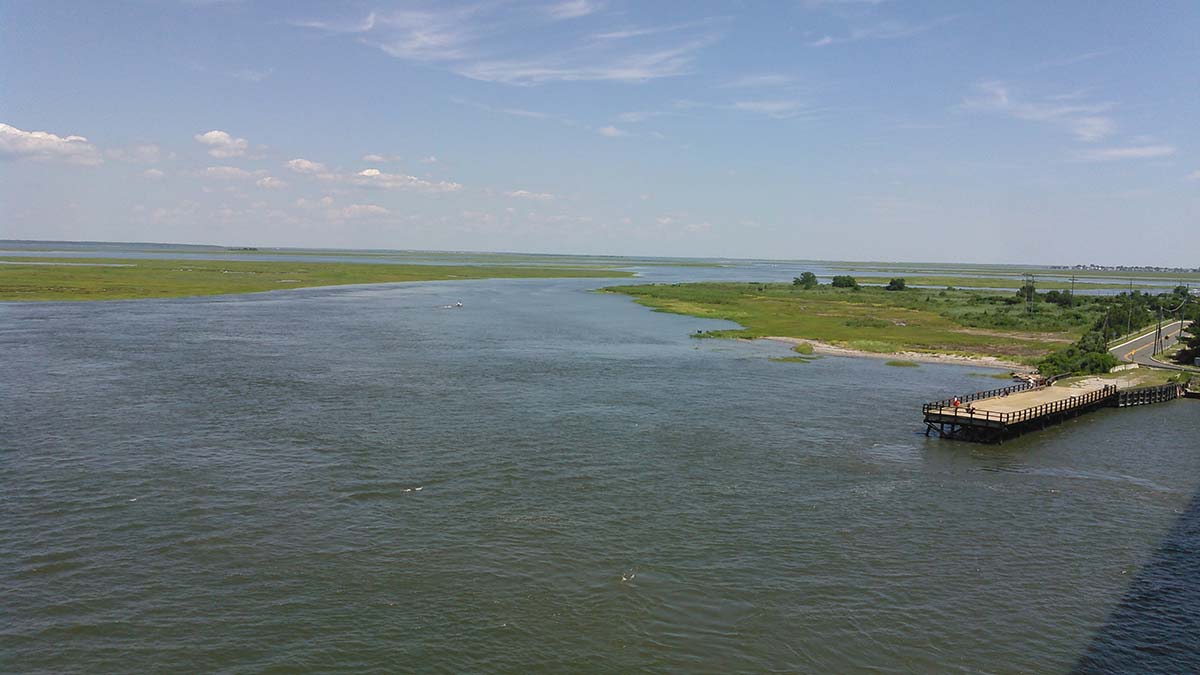
Early Season Strategies
Tactically speaking, there are two different approaches in terms of presentation. One is the always-effective live bait method. Minnows reign skinny-water king in May and June until other baits present themselves as options. A fat minnow laced on an Eagle Claw L42 series hook or a Gamakatsu 3/0 octopus hook will catch fish after fish, including keepers – those BKK octopus hooks you received with your subscription to The Fisherman Magazine during the winter show season should fit the bill nicely!
There’s no need for extra fluff as the live bait doesn’t require audacious spinners and beads to get the job done. Clear Berkley Big Game 30-pound leader material ahead of the hook connected to 20-pound Spiderwire Durabraid is the ticket for me. Add the appropriate bank sinker to a three-way rig, fish finder rig or top and bottom rig and you are set! Fishing straight up and down with minimal scope in the line is best for attaining bites, avoiding tangles and grabbing less grass. In the event the line does extend far from the boat, add another ounce of weight.
As June creeps toward July, other superior bait options become available, especially peanut bunker invading the creeks, basins and marinas. Caught with a cast net, they prove deadly. Baby bluefish can be captured around boat slips with a sabiki rig tipped with squid. And live spots are doormat killers. Primarily imported from Virginia or North Carolina during the early part of the season, they can be purchased at select tackle shops. Although the “elephants love peanuts” philosophy is out there, I choose the big bait equals big fish approach. I do all I can to obtain bait that is superior in size when live bait fishing.
The second approach to bait is that of synthetic baits. Forget minnow traps and cast nets because Berkley Gulp Alive offerings are proven commodities that catch keepers and doormats. Snap jigging lightweight rod and reel outfits keeps the bait bouncing. Shorter custom rods 5 to 6 feet in length work for the most aggressive snap jigging while larger blanks are amicable for those that use a subtle, rhythmic twitch. Berkley Gulp Alive five or six grubs rank at the top of the list and will work in each and every color. I prefer pink shine, white, sardine, new penny and blue fuze. Paddleshads and Swimming Mullets are also musts in any tackle bag. When the trash fish show up, I include Gulp Jerk Shads and Shrimp in the mix because they hold up well against tail-nabbing thieves.
July and August are months when South Jersey fluke inundate the inlets as they slowly migrate back out to the ocean. Inlets act as a funnel thus all the fish that were in the back bays have to pass through making them perfect intercept points. Moreover, it is my belief that some of the larger, doormat-quality fish don’t leave the inlet once they arrive. I have nothing more than anecdotal observation to support this theory, but year-in and year-out, the majority of 10-pounders caught in the South Jersey estuary systems are reported from the inlets connected to them. Anglers that find rough bottom, sloped contours or any structure should supply drifts to these locations.
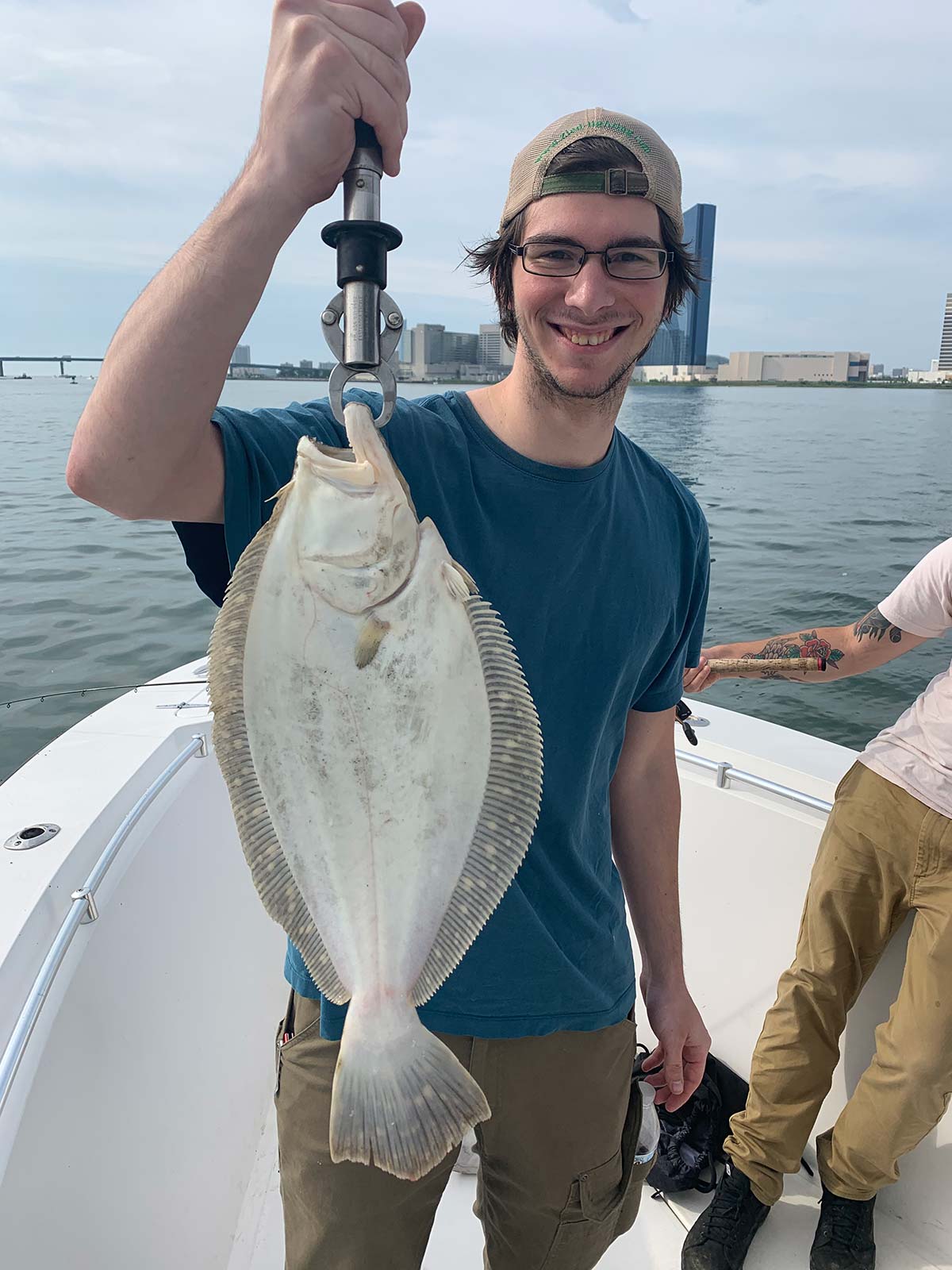
Tails From The Deep
South Jersey beaches contain a shallow taper out to the depths where the bottom composition is primarily sand or mud. The south lacks significant glacial remains in the form or hard bottom or rocky profile so captains rely mostly on artificial reef sites that include sunken vessels, tanks, reef balls, concrete and other suitable structure. The GPS numbers for each piece are public and accessible online at njfishandwildlife.com. In addition, there exists many maritime wrecks from the last 200 years. Each has its own story and many of them hold a plethora of fluke once the fish move in. Wrecks that contain a debris field from being wire-dragged for shipping safety are some of the best around. Wire-dragging is the process of two tug boat pulling a heavy cable across the upper part of the wreck in order to decapitate it and lower its overall profile. This affect can create a small debris field akin to systemically scattered reef material.
When does ocean fluking in South Jersey truly take off? Well, that depends where one is fishing. Anglers fishing structure offshore of Cape May can find an ocean fluke bite as early as the third week of June which continues throughout the entire fluke season. Aside from that outlier, ocean fluke fishing generally cranks up in earnest near the end of July and the first week of August. Every year there can be a little wiggle room in when the bite gets going south of Long Beach Island. Thinking back to 2012, all of South Jersey’s wrecks lit up with an abundance of fluke near the end of June; that’s the reason why many anglers do recon to see if their favorite pieces show life even while the back bay is still top form.
Anglers drifting Gulp and meat ribbons catch well. Live bait usually catches less volume in the ocean, but beware, it still accounts for very large fish when the strikes come. Structure anglers can expect an array of sea robins, bergalls and sea bass so it’s important to come loaded with the day’s desired baits. Summer flounder like to hunt in the lee and on the side of wrecks. However, if the profile is suitable for fluke to lay on or within the wreck pieces, they do so happily.
Most anglers use a single bucktail or jig with a dropper loop containing a teaser hook roughly a foot above the ballast. This stacked presentation allows anglers to fish two baited hooks with their choice of bait. In terms of leader, 30- to 40-pound clear mono is sufficient. There exists another contingent of fishermen that heartily lighten up their entire system; these anglers might use 20-pound braid to 20-pound mono leader and a single jig. The whole idea is to slice the water column and avoid drag on the line hence a lightweight offering can arrive at the bottom in deep water. This has allowed creative anglers to fish 3/4-ounce jigs baited with Berkley Gulp in waters 70 to 95 feet depending on the current.
Because South Jersey structure generally lies 3 to 20 miles off the hill, morning departures that allow fishing before the afternoon southerlies create unrelenting white caps. Contrarily, a morning that begins with a gusty north or northwest wind, has a solid chance at seeing diminishing gusts throughout the day making a delayed start a plausible possibility.
Skippers that check structure in each depth of water are more apt to locate pods of fish. For example, it’s easiest to check pieces in 40 to 60, and if they don’t command attention, move out to 70 to 100 feet. In addition, there are times structures are paved with so many throwbacks it’s difficult to find a keeper despite the terrific drop and reel action. In this case, a fisherman can pound away in order to eventually pull keeps from the poor ratio. Or they can change structures in effort to locate better size.
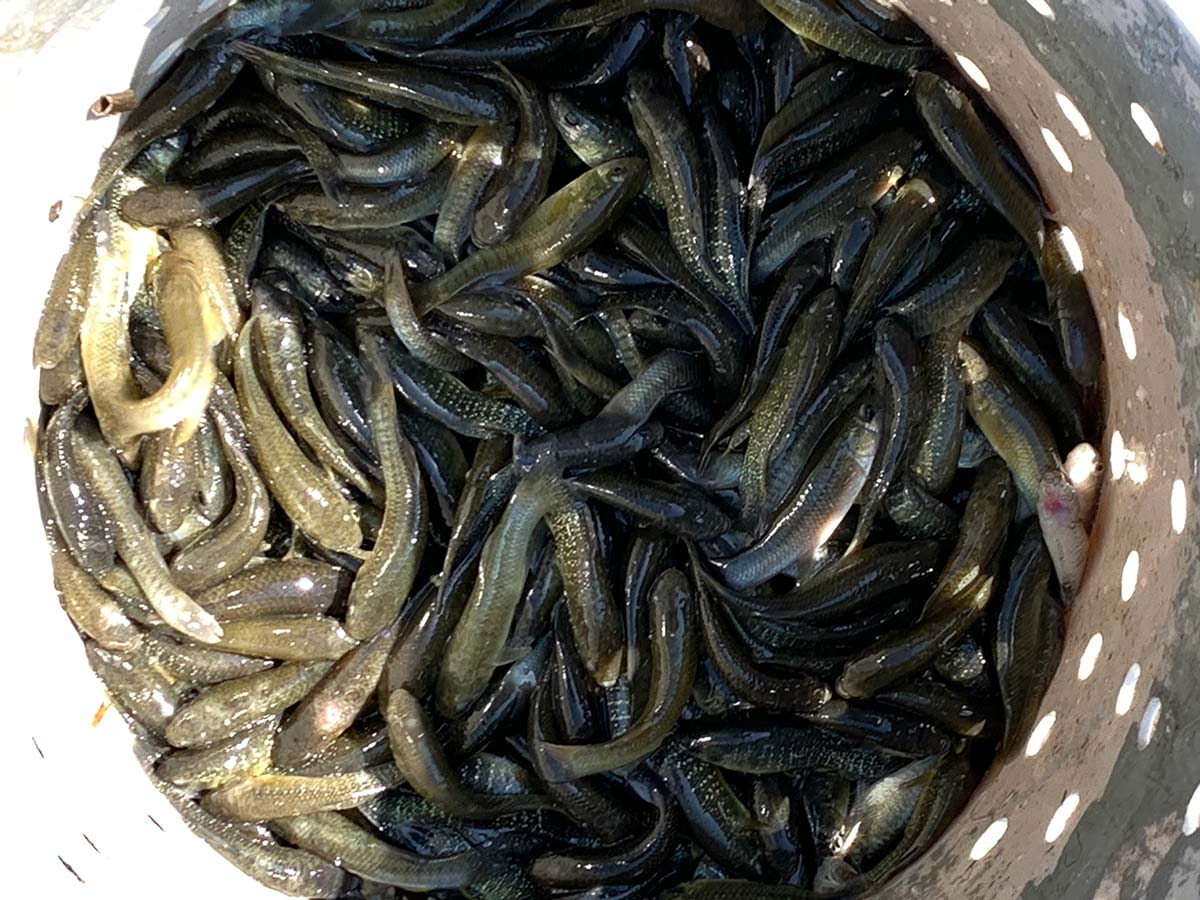
Fluke Habits & Tips
Generally speaking, fluke don’t recreate their behavior too much from year to year. There are certainly years where a certain wreck or creek doesn’t see the same biomass as prior, but on a whole, if a body of water or piece of structure has caught well in the past, there is a strong prospect it will do so again. It serves anglers to put their efforts in locations that are known, keeper producers with the occasional doormat if outings are limited. Just to keep it interesting and improve a fisherman’s repertoire, I highly suggest every angler that gets out on a semi-regular basis, try to explore a couple new spots each season. In the bay, it could be a new channel or thoroughfare, and in the ocean, it could be a new reef or wreck. Getting away from one’s comfort locations will make a fisherman better in the long run. And who knows, it might result in a creel of keepers or even a mat.
As for tackle tips, I always remind folks that if they’ve invested in an expensive boat, high end fishing rods/reels and all the other necessities, then they should not cheap out on the bait! Too many times I’ve observed this mistake. Whether it’s buying an extra quart of live minnows, picking up a dozen live spots or loading up on additional colors and models of Gulp Alive, fishermen should not skimp!
The 2023 summer flounder is upon us all; failing to plan is planning to fail. Whether on paper or mentally, map out when, where and how you approach each South Jersey or Delaware outing with a little extra attention to the details and excellent outings will abound.

